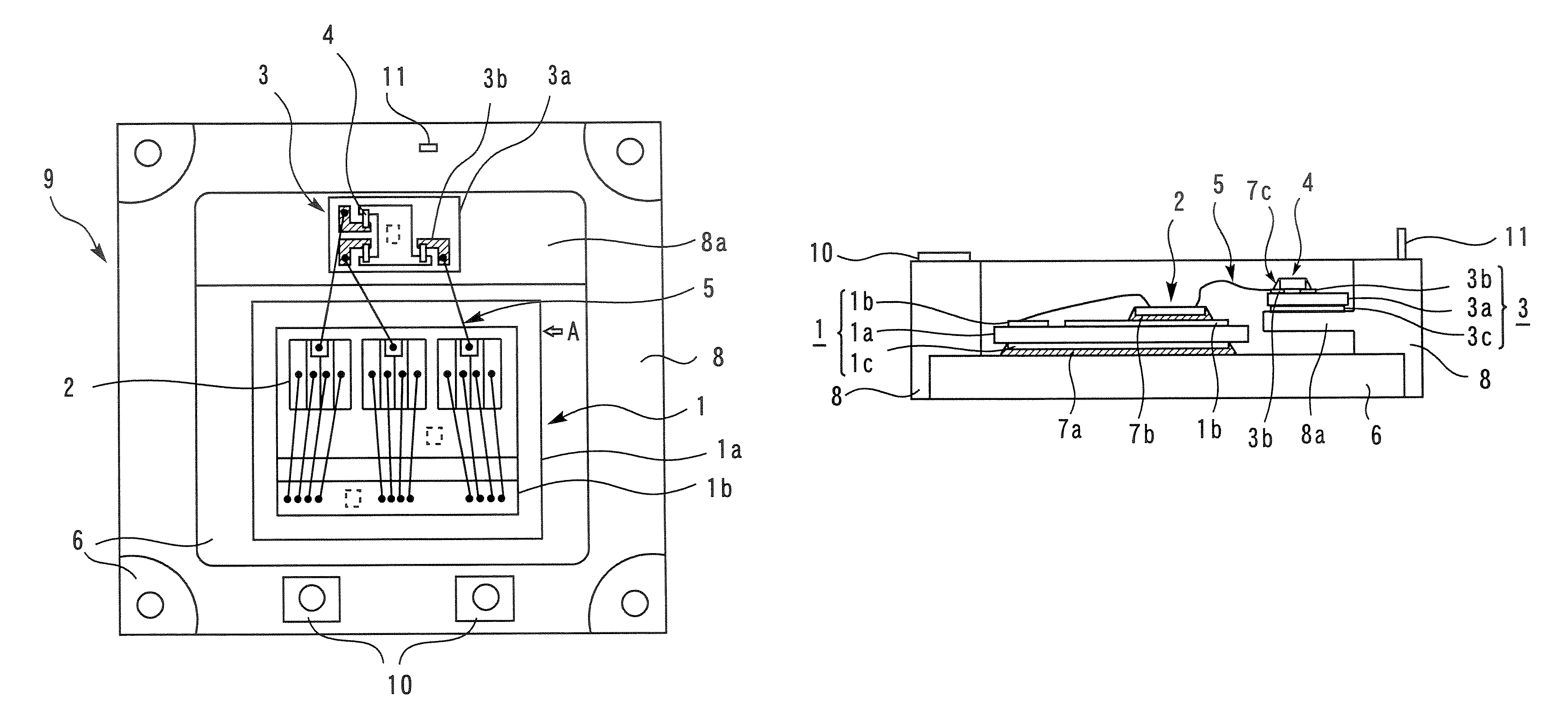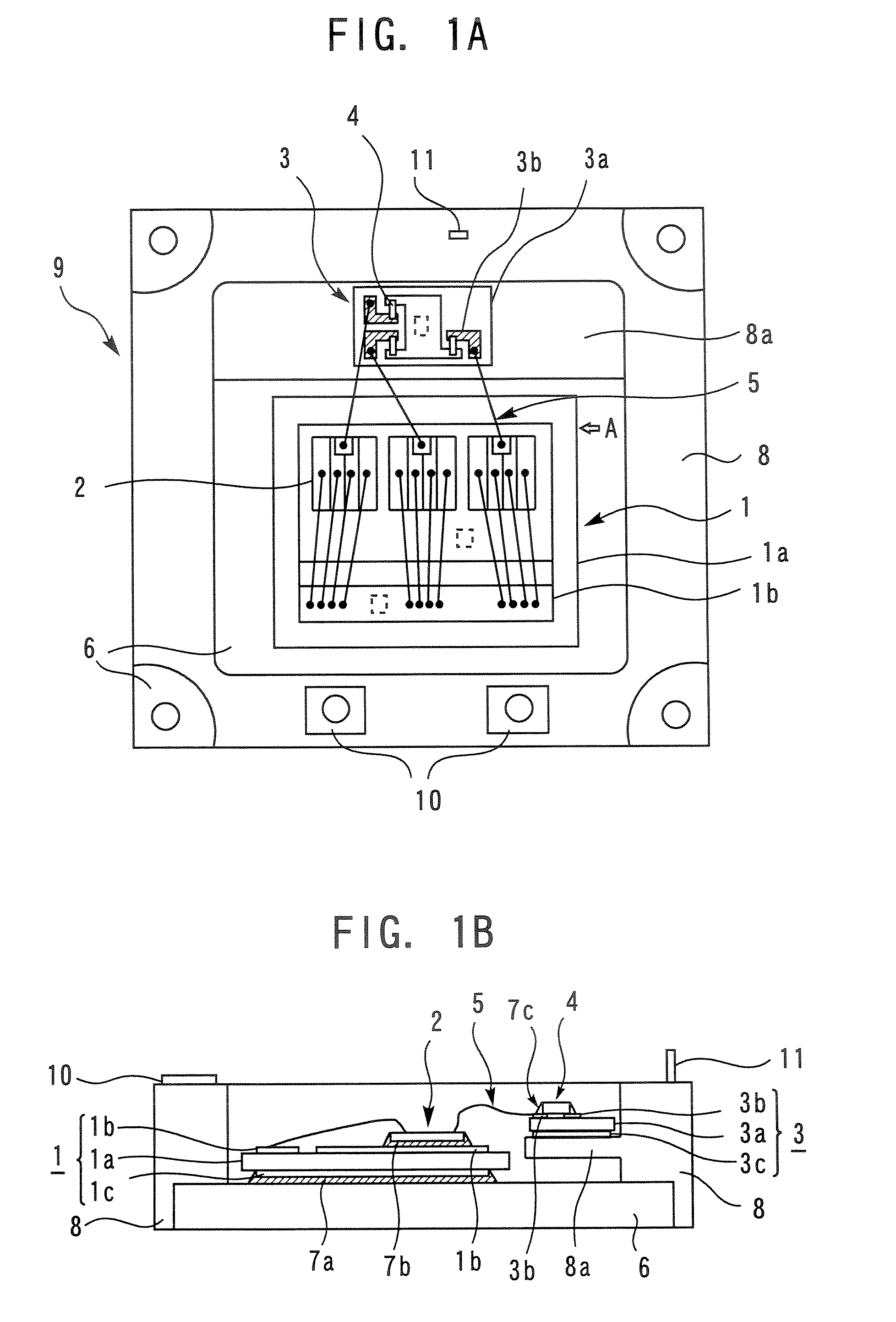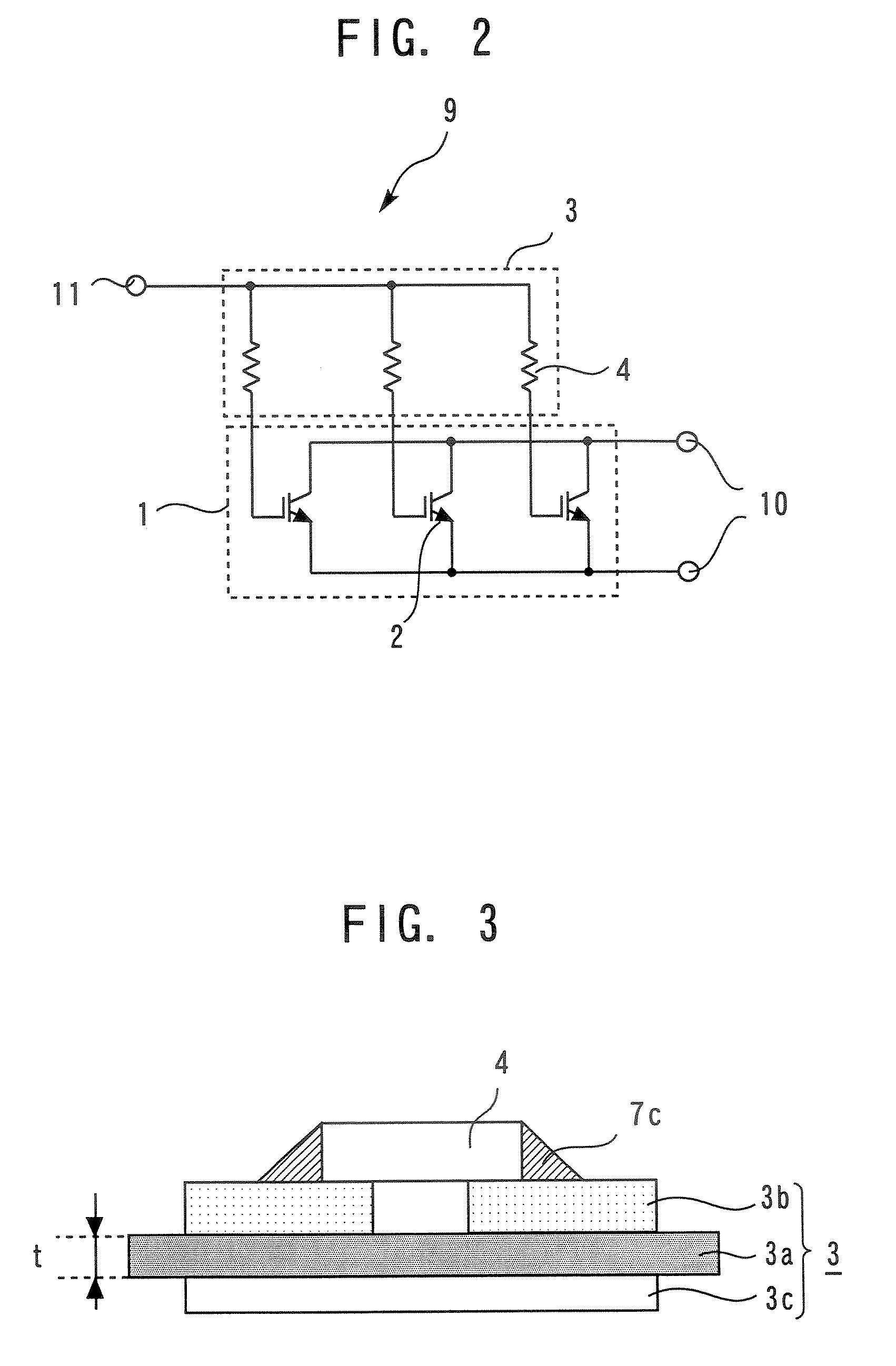Semiconductor device having a resistance for equalizing the current distribution
a technology of current distribution and resistance, which is applied in the direction of solid-state devices, basic electric elements, electrical apparatus construction details, etc., can solve the problems of resistance value rise and gradual cracking of the solder, and achieve the effect of preventing open-circuit defect of gate balance resistance and high reliability
- Summary
- Abstract
- Description
- Claims
- Application Information
AI Technical Summary
Benefits of technology
Problems solved by technology
Method used
Image
Examples
first embodiment
[0020]A semiconductor device according to the first embodiment will be described. FIG. 1A is a plane view of the semiconductor device according to the present invention; and FIG. 1B is a side view of the semiconductor device viewed from the A direction in FIG. 1A. The semiconductor device is equipped with a heat sink 6 composed of a metal, such as copper and aluminum, and a first insulating substrate 1 is formed on the heat sink 6. The first insulating substrate 1 has a first insulating layer 1a, a first conductive pattern 1b, and a first back face pattern 1c. The first conductive pattern 1b is formed on the upper surface of the first insulating layer 1a, and the first back face pattern 1c is formed on the lower surface of the first insulating layer 1a. The first insulating layer 1a is composed of a ceramic, such as AlN (aluminum nitride), and the first conductive pattern 1b and the first back face pattern 1c, which are joined to the first insulating layer 1a, are formed of copper o...
second embodiment
[0032]A semiconductor device according to the second embodiment will be described. Here, the description will be focused around aspects different from the first embodiment.
[0033]In a conventional art, a semiconductor element 2 and a resistance element 4 were formed on the same insulating substrate. Consequently, the insulating substrate required an insulation resistance to several thousands of volts. However in the first embodiment, an insulating substrate on which a gate balance resistance had been mounted was fixed on the side of the insulating resin casing. Therefore, it is considered to be sufficient if the insulating substrate has an insulation resistance to several tens of volts. For this reason, the second embodiment has a structure wherein the thickness of the insulating layer in the insulating substrate on which a gate balance resistance is mounted is thinner than the thickness of the insulating layer in the insulating substrate on which a semiconductor device is mounted.
[0...
third embodiment
[0038]A semiconductor device according to the third embodiment will be described. Here, the description will be focused around aspects different from the first and second embodiments.
[0039]The plane views of the first insulating substrate 1 and the second insulating substrate 3 of a semiconductor device according to the third embodiment are shown in FIGS. 4A and 4B, respectively. In FIG. 4A, the shortest distance from the periphery of the first conductive pattern 1b to the periphery of the first insulating layer 1a along the surface of the first insulating layer 1a, namely the creeping distance from the first conductive pattern 1b to the periphery of the first insulating layer 1a is represented by D1. In FIG. 4B, the shortest distance from the periphery of the second conductive pattern 3b to the periphery of the second insulating layer 3a along the surface of the second insulating layer 3a, namely the creeping distance from the second conductive pattern 3b to the periphery of the se...
PUM
 Login to View More
Login to View More Abstract
Description
Claims
Application Information
 Login to View More
Login to View More - R&D
- Intellectual Property
- Life Sciences
- Materials
- Tech Scout
- Unparalleled Data Quality
- Higher Quality Content
- 60% Fewer Hallucinations
Browse by: Latest US Patents, China's latest patents, Technical Efficacy Thesaurus, Application Domain, Technology Topic, Popular Technical Reports.
© 2025 PatSnap. All rights reserved.Legal|Privacy policy|Modern Slavery Act Transparency Statement|Sitemap|About US| Contact US: help@patsnap.com



